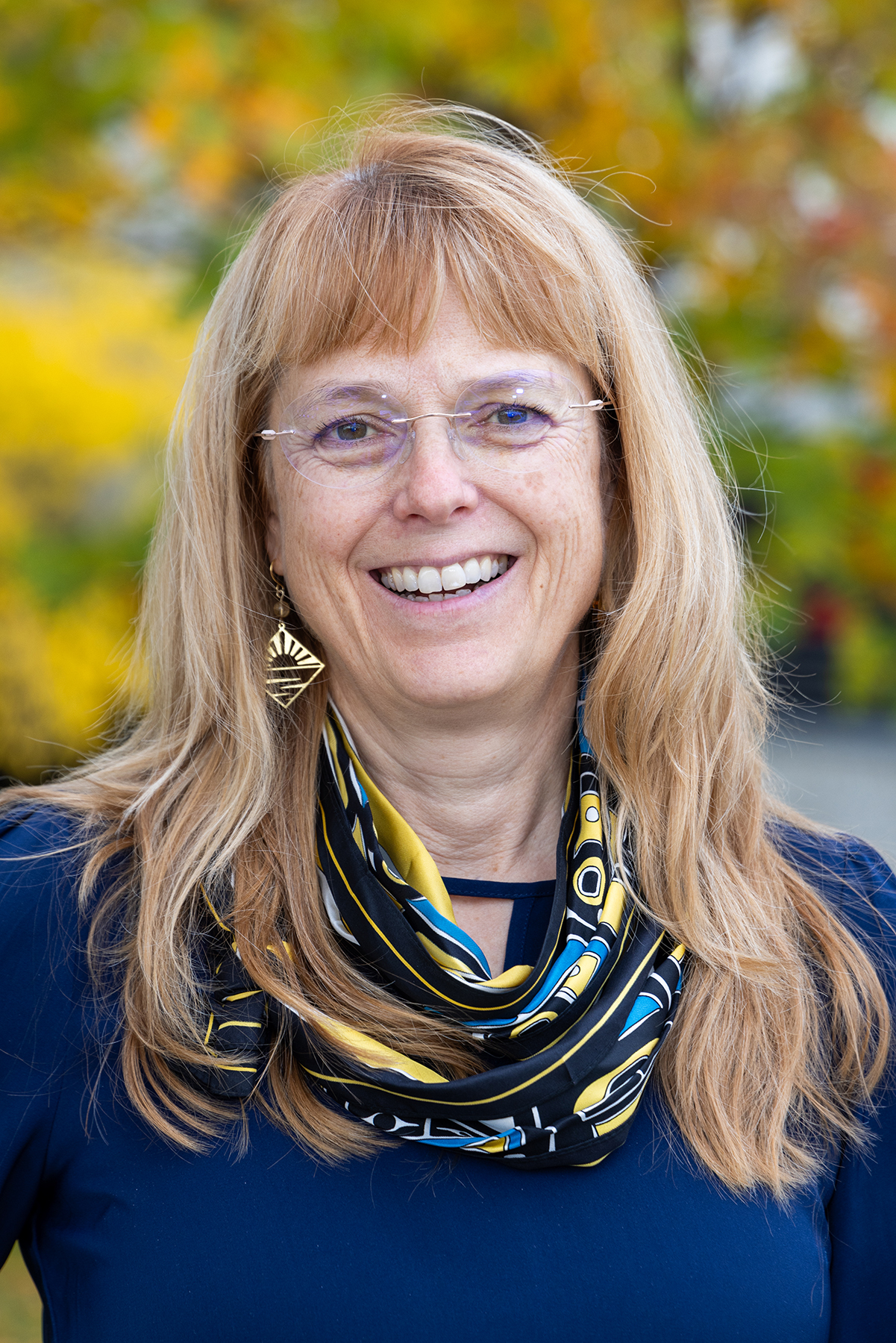Friday Focus: Using notice as a verb

Nettie La Belle-Hamer, vice chancellor for research
Oct. 4, 2024
— Nettie La Belle-Hamer, vice chancellor for research
When we see the word ‘NOTICE’ on an email, website, or bulletin board, we expect information is coming. However, thinking about it as merely a noun, like ‘MEMO’, can decrease its urgency. Sometimes, using ‘notice’ as a verb can enhance our lives. Imagine getting lost on unmarked trails – frustrating, until you notice a beautiful grove you hadn’t explored before. Suddenly, that frustration is replaced by wonder. Or, waking in the middle of the night to a crying baby, a barking dog, or, thanks to my neighbors, a crowing rooster can feel exhausting. Until you notice the full moon bringing magic to the night. Even driving home in the dark during the long Alaska winter can feel oppressive. But noticing the aurora dancing in the sky and pulling over to enjoy the show changes everything!
Noticing, then, is the first step to being in the moment, to mindfulness. It can happen anywhere.
Mindfulness is often pictured as sitting quietly with incense and soft music. But being mindful can take many different forms and involve action, even a workout! Mostly being mindful is about taking notice of what you are doing, your surroundings, and your mindset. For those of us who find sitting still a challenge, this broader view of mindfulness can be more approachable. Science, too, supports the positive effects of mindfulness.
Creswell et al. (article found here) suggest that mindfulness can improve pain management outcomes among chronic pain populations. Perhaps even more intriguing, their review found preliminary evidence for mindfulness interventions improving specific stress-related disease outcomes in some patient populations, such as clinical colds, psoriasis, IBS, PTSD, diabetes, and HIV. A recent article in Scientific American explores ways meditation advances mental health. Noticing is the first step.
At UAF, we have excellent opportunities to embrace noticing. The North Campus woods on Troth Yeddha’, for example, provide easy access to beautiful wooded areas that can be used for walking, running, skiing, or simply forest bathing. We are fortunate to have such a vast, integrated space right at our doorstep—research and education blend with public access to these beautiful surroundings. I encourage you to step outside and explore!
While you are outside, look up! Our access to nature’s beauty is not limited to the woods. Notice the wonders of the northern sky – whether its the moon, the aurora, or a newly discovered comet! This new comet, named C/2023 A3 Tsuchinshan-ATLAS, is forecast to make a potentially spectacular appearance shortly after sunset during mid-October.
“The comet is not favorably positioned for viewing from Fairbanks right now, but starting around October 11 it should be visible low near the WSW horizon shortly after sunset -- around 7-8 p.m.,” according to UAF’s Mark Conde, professor of space physics at the Geophysical Institute. “I think the azimuth will put it a bit west of Denali, as seen from Fairbanks.”
For those who are excited about the possibility, Conde cautions that comet brightness is notoriously hard to predict, or whether it will even remain intact. On the other hand, Conde also notes that, since it is now solar max, we may even see it with some aurora in the sky as well.
A rare sight, definitely worth noticing!
Stay tuned for more information on when and where you can best enjoy the new comet from UAF Troth Yeddha’ campus. In the meantime, there is an online planetarium prediction of the comet's location in our sky just after sunset on Oct. 14.


